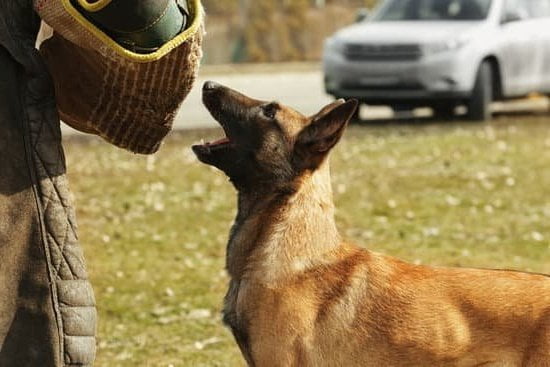Does hitting a dog help with training? This controversial question has sparked debates among dog owners, trainers, and animal behavior experts. In this article, we will delve into the ethics and effectiveness of different dog training methods to provide a comprehensive understanding of how to train our canine companions.
We will explore the impact of physical punishment on dogs, debunk common myths, and shed light on positive reinforcement as a science-backed approach to training. By the end of this article, readers will have a clearer picture of the long-term consequences of using physical force in dog training, as well as effective and humane alternatives that build trust and bonding between dogs and their owners.
Understanding the different approaches to dog training is essential for any responsible pet owner. The use of physical punishment is often misunderstood and misrepresented in popular culture. It’s time to dispel these myths and dive into the science behind reward-based training that nurtures a healthy relationship between dogs and humans. By exploring canine behavior and learning processes, we can empower ourselves with valuable knowledge that leads to successful outcomes in dog training.
Empathy, understanding, and respect are integral components of ethical and effective dog training methods. Through this exploration of various training techniques, readers will gain valuable resources and tips for employing positive reinforcement as a powerful tool in creating well-behaved and happy dogs. Join us on this journey to discover the most compassionate ways to train our beloved four-legged friends.
The Impact of Physical Punishment on Dogs
Many dog owners believe that hitting a dog can help with training, but this is a common myth that needs to be debunked. The reality is that physical punishment can have significant negative impacts on a dog’s behavior and mental well-being.
One of the most harmful effects of hitting a dog is the erosion of trust between the animal and its owner. When a dog experiences physical pain or fear from its owner, it can lead to anxiety, aggression, and other behavioral issues.
Furthermore, studies have shown that dogs subjected to physical punishment are more likely to exhibit signs of stress and fear in their daily lives. This can manifest in various ways, such as shaking, cowering, or avoiding certain people or situations. In extreme cases, prolonged exposure to physical punishment can even result in long-term psychological damage for the dog.
Positive reinforcement-based training methods, on the other hand, have been proven to be much more effective in shaping desired behaviors in dogs. By using rewards such as treats, praise, and toys, owners can encourage their dogs to repeat good behaviors while also strengthening the bond between them. This approach not only yields better results in terms of obedience and manners but also contributes to a happier and healthier relationship between the dog and its owner.
| Impact of Physical Punishment | Effect |
|---|---|
| Erosion of trust | Anxiety and aggression |
| Signs of stress and fear | Long-term psychological damage |
Positive Reinforcement
When it comes to training our canine companions, it’s important to consider the most effective and ethical methods available. Positive reinforcement, a reward-based training approach, has been scientifically proven to be one of the most successful ways to train dogs. This method involves rewarding desired behaviors with treats, praise, toys, or any other positive stimuli. Unlike physical punishment, positive reinforcement focuses on encouraging good behavior rather than punishing bad behavior.
The science behind positive reinforcement lies in the way dogs learn. When a dog is rewarded for exhibiting a certain behavior, such as sitting on command or walking nicely on a leash, their brain releases dopamine, a feel-good chemical that reinforces the behavior. Over time, this creates an association between the behavior and the reward, making it more likely for the dog to repeat the desired action in order to gain the reward.
In contrast to physical punishment, which can cause fear and anxiety in dogs and damage the bond between them and their human companions, positive reinforcement fosters trust and strengthens the bond between a dog and its owner. By using rewards and praise as motivation for good behavior, dog owners can create a positive and supportive training environment that promotes trust and mutual respect.
- Scientific evidence supports the effectiveness of positive reinforcement in dog training
- Rewards release dopamine in a dog’s brain, reinforcing desired behaviors
- Positive reinforcement builds trust and strengthens the bond between dogs and their owners
The Long-Term Consequences of Using Physical Force in Dog Training
The use of physical force in dog training can have long-term consequences on the overall behavior and well-being of dogs. It is important for dog owners to understand the potential negative impacts of punitive training methods in order to make informed decisions when it comes to training their pets.
Here are some long-term consequences of using physical force in dog training:
- Fear and anxiety: Hitting or physically punishing a dog can lead to fear and anxiety, causing the dog to become apprehensive and stressed during training sessions and even in everyday interactions.
- Aggression: Using physical force can escalate aggressive behavior in dogs, as they may learn to respond with aggression when feeling threatened or intimidated.
- Trust issues: Dogs that are subjected to physical punishment may develop trust issues with their owners, leading to a breakdown in the bond between human and canine.
Instead of resorting to physical force, it is important for dog owners to consider positive reinforcement training methods, which have been proven to be effective without the negative long-term consequences.
Positive reinforcement involves rewarding desired behaviors with treats, praise, or toys, which helps strengthen the bond between the owner and the dog while encouraging good behavior.
Using positive reinforcement also allows for a more enjoyable and fulfilling training experience for both the dog and the owner. In addition, it promotes a healthier relationship based on trust and understanding rather than fear and intimidation.
Building Trust and Bonding Through Positive Training Techniques
Positive training techniques not only teach your dog the behaviors you want, but also help to build a strong bond based on trust and respect. Using physical punishment in dog training can have detrimental effects on your relationship with your pet, as well as their overall well-being. Positive reinforcement, on the other hand, has been proven to be an effective method for teaching dogs desired behaviors while strengthening the bond between owner and pet.
Research has shown that dogs respond better to positive training methods than they do to punishment-based techniques. When a dog is rewarded for good behavior, they are more likely to repeat that behavior in the future. This creates a more harmonious relationship between you and your pet, built on trust and understanding.
Positive reinforcement also helps to create a positive association with training sessions for your dog. They will come to view training as a fun and rewarding experience rather than something to be feared or avoided. This can lead to a stronger bond between you and your pet as you both enjoy the time spent together during training sessions.
| Positive Training | Negative Training |
|---|---|
| Creates strong bond | Can damage relationship |
| Teaches desired behaviors effectively | May lead to fear or anxiety in dog |
| Creates positive association with training | May create negative association with training |
Understanding Canine Behavior
Instinctual Behavior and Learning
Dogs, like their wild ancestors, have natural behaviors and instincts that influence how they learn and respond to training. Understanding these instincts can help dog owners tailor their training methods to effectively communicate with their pets. For example, a dog’s pack mentality means that they respond well to structure and hierarchy within the household. Additionally, dogs have a strong desire to please their human companions, making positive reinforcement an effective method for teaching new behaviors.
Learning Through Association
Dogs learn through association, meaning they connect actions with consequences. This is why positive reinforcement is such a powerful tool for training. When a dog performs a desired behavior and receives a reward or praise, they associate that action with positive outcomes and are more likely to repeat it in the future. On the other hand, physical punishment can create negative associations and lead to fear or anxiety in the dog.
The Role of Communication
Communication is crucial in training dogs effectively. Dogs rely on body language, tone of voice, and consistency from their owners to understand expectations and boundaries. Clear communication helps build trust between a dog and its owner, creating a harmonious relationship built on mutual respect. Positive reinforcement training emphasizes clear communication and strengthens the bond between a dog and its owner by fostering trust and understanding.
By understanding the natural behaviors of dogs, learning through association, and the importance of effective communication, dog owners can use this knowledge to train their pets using positive reinforcement techniques rather than resorting to physical punishment. This approach not only creates a happier and healthier relationship between owners and their dogs but also leads to more successful long-term training outcomes.
Alternatives to Physical Punishment
Physical punishment as a training method has been a subject of debate among dog owners and trainers. While some may argue its effectiveness, there is growing evidence that suggests the adverse effects of hitting a dog for training purposes. Fortunately, there are numerous alternatives to physical punishment that are not only effective but also promote positive behavior in dogs.
Positive Reinforcement Training
Positive reinforcement training involves rewarding desired behaviors with treats, toys, or praise. This method focuses on encouraging good behavior rather than punishing bad behavior. By using positive reinforcement, dogs learn to associate their actions with favorable outcomes, ultimately leading to a stronger bond between the owner and the pet.
Clicker Training
Clicker training is another form of positive reinforcement that utilizes a small handheld device that emits a “click” sound when pressed. The click is used to mark the correct behavior at the exact moment it occurs, followed by a reward. This clear communication technique helps dogs understand what they did correctly and reinforces proper conduct.
Behavioral Modification Techniques
For dogs displaying undesirable behaviors such as aggression or fear, behavioral modification techniques can be implemented without resorting to physical punishment. These methods focus on addressing underlying issues through desensitization and counter-conditioning, helping the dog develop more positive associations with triggering stimuli.
By understanding and implementing these alternative training methods, dog owners can foster healthier and more trusting relationships with their pets while effectively shaping their behaviors for the better. It is crucial to recognize that physical punishment does not only harm the dog’s well-being but also strains the human-dog relationship. Thus, choosing humane training methods will lead to long-term success in shaping a well-behaved and happy canine companion.
Empowering Dog Owners
In conclusion, the use of physical punishment in dog training is not only ineffective but also harmful to the well-being and trust between a dog and its owner. As debunked in this article, hitting a dog does not help with training and can lead to long-term consequences such as fear, anxiety, and aggression in the animal. Understanding the ethics and effectiveness of different training methods is crucial for responsible dog ownership.
Positive reinforcement has been scientifically proven to be an effective and humane training method for dogs. By rewarding desired behaviors with treats, praise, or toys, owners can build a strong bond with their pets while promoting good behavior. This approach not only teaches dogs what is expected of them but also nurtures a trusting relationship between the owner and their pet.
It is important for dog owners to educate themselves on canine behavior and learn how dogs learn and respond to training. With resources and tips for successful positive reinforcement training readily available, empowering dog owners to use effective and humane methods will ultimately result in well-behaved, happy, and confident dogs. Committing to positive reinforcement training techniques can lead to a fulfilling partnership between a dog and its owner based on trust, understanding, and mutual respect.
Frequently Asked Questions
Can You Train a Dog by Hitting Them?
No, hitting a dog is not an effective method of training. Using positive reinforcement and clear communication is more helpful in teaching your dog what behaviors are desired.
Is Hitting Your Dog Effective Discipline?
Hitting your dog is not effective discipline and can actually lead to fear, anxiety, and aggression in the long run. Positive reinforcement and consistency are better alternatives for disciplining a dog.
Does Smacking a Dog on the Nose Work?
Smacking a dog on the nose is not an effective way to correct their behavior. It can lead to fear and mistrust, and may even escalate aggression in some dogs. Positive training methods are more successful in shaping good behavior in dogs.

Welcome to the blog! I am a professional dog trainer and have been working with dogs for many years. In this blog, I will be discussing various topics related to dog training, including tips, tricks, and advice. I hope you find this information helpful and informative. Thanks for reading!





